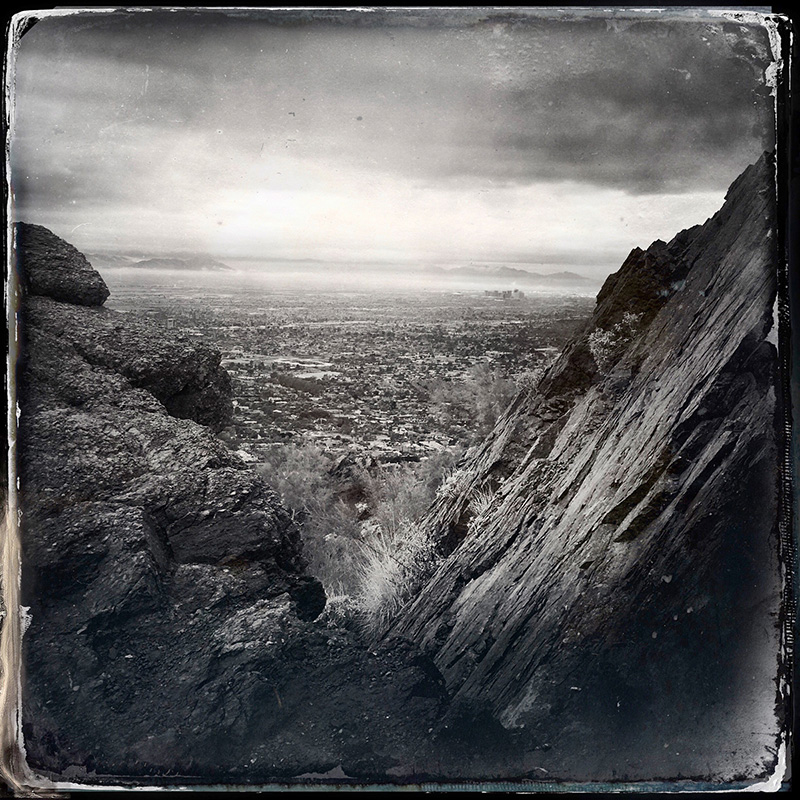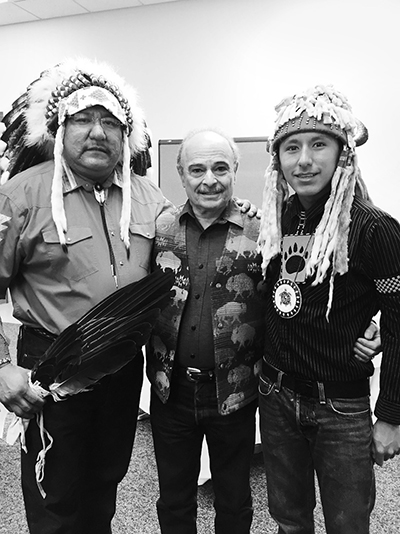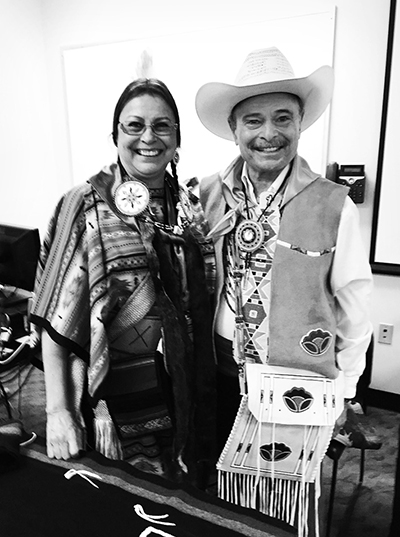
A professor’s journey to becoming adopted by a Native American Tribe after a lifetime of building cross-cultural bridges
—
My life has existed at the crossroads of two cultures for more than three decades — one foot planted in the modern American paradigm and the other equally in that of the Native American. Recently, I was deeply honored to be adopted into an American Indian Tribe, an extraordinary event which punctuated my journey of building cross-cultural bridges and mutual understanding. This story begins here:
I met Melinda on a river trip. I was on a leave of absence from teaching; she was a physician practicing allopathic family medicine on the Navajo Reservation. This fateful meeting changed my life personally and professionally.
Melinda’s experience on the reservation piqued my interest in American Indian studies that went way beyond the Hollywood stereotypes and mascot politics of Native Americans. In particular, I was intrigued by Melinda’s relationship with Mrs. Stanley, an honored medicine woman who was also her clinic’s nurse and interpreter’s mother. When Melinda could not figure out a difficult diagnosis in her clinic she would say, “Maybe you should see Mrs. Stanley up on the mesa…” — meaning a traditional Navajo diagnostician would take over. Likewise, when Mrs. Stanley saw something she thought allopathic medicine would heal she would say to her client, “Maybe you should see that white lady doctor down in the valley…”
This mutual respect between two healers inspired Melinda to learn Navajo so that she could speak to her patients in their own language. She believed that working collaboratively with native people was the most powerful way to impact their healing.
This practice served her well in her capacity as a consultant for over 20 years to the Indian Health Service on reservations throughout Montana.

Melinda and I married 15 months after that trip, and we both went on to finish our graduate studies at the University of Arizona. While there, I had the honor and life-changing good fortune to work closely with the noted Native American scholars, Vine Deloria, Jr. and N. Scott Momaday. I took their classes, visited with them over coffee, and listened to their stories about life on reservations. What impressed me the most was that these men were able to balance exploring new worlds — literally and academically — while remaining deeply connected to their own culture and families. This is something I have since strived to achieve in my own life.
I think back now to the very first class I taught at MSUB when I was publically confronted (and ironically the only time such an incident occurred) with the question, “What makes you think you can teach Native American Studies when you are not an Indian?” Whoa, I said to myself, This could be a short career here. And I answered the most honest way I could think of relating back to what I learned from my mentors, “Yes, I am not a Native, and I have studied under some of the best American Indian scholars and I admire and respect Native culture and contributions. I know about the general dynamics of tribal societies, the history of American Indian people, as well as treaty law and federal Indian policy, and I would like to share that knowledge and respect with any who cares to listen. I will never purport to say what Indians think about this or that, because I am not one.
I will honor and listen to both sides of the story and share the Native historical side because so little of it has been accurately reported.”
And thus began my 30+ year career in Native American Studies.
As a professor and a teacher of diversity training workshops, my primary goal has always been to accurately tell stories and share information that others may not know. So many of these stories — the true DNA of a people — were culled from my previous international travels as well as from my Native students.
Many of my students were first generation college students who did not have the luxury of being ‘just students’. Like so many from similar first generation families, they were also parents, full-time workers (outside of class times), and care providers to elders of their families. Many had special obligations to their families, clans and societies that required them to be present at tribal ceremonies that were not regulated by the university calendar. Being American Indians in a public state university, many had to leave the comfort zone of their own towns and families and learn how to live the duality of both worlds: the white majority society and their own rural reservation. Many of my non-Indian students had no idea of the unreported American Indian perspective of history. For example, what it was like to be a contemporary Native American who could be listening to the latest rap tune on his/her iPhone while going to a Sundance (where upon it would be put away after a stern glance from an elder). All of this provided me with abundant opportunities for an exchange of information and cross-cultural understanding.

This past spring of 2016, upon my retirement from Montana State University-Billings (MSUB), in recognition of my life’s work, I was bestowed one of the highest of honors — being formally adopted into the Crow Tribe of Montana. While it is not so rare for a ‘trusted friend’ of the Crow Tribe to be adopted (such as Barack Obama), my adoption was unique in that it took place off the reservation in the university gymnasium before approximately 1500 people. Since it was conducted off the reservation, to assure that the ceremony was performed in a traditionally correct way, it had to have the approval and blessing of many Crow elders from districts across the vast reservation (almost 2.5 million acres, about the size of Connecticut). This was accomplished thanks to my colleague, Reno Charette (Crow) and her family, with the assistance of many Native students such as Levi Yellowmule, a traditional Crow Indian who received academic credit for his key role in aiding my cross-cultural adoption.
My adoption ceremony was filled with cherished memories. In a sage and cedaring blessing ceremony earlier in the day, I was given a Crow name: Bawaaeechecheiishiitche. You cannot be ‘adopted’ without being ‘born’ and given a new name. The approximate English translation of my Crow name is: He who enjoys teaching and sharing with others. During the ceremony, Melinda and my sister, Hilary, were gifted with traditional clothing — one of the many physical and spiritual gifts that were given to us throughout the day. Becoming a member of the Crow tribe was certainly the most significant singular honor ever bestowed upon me — a day I will never forget. The connections and the cultural bridges that were built out of my initial curiosity and admiration and willingness to ‘learn another way’ and not be afraid of what I might find eventually led to mutual understanding and trust in a truly extraordinary cultural embrace.
So, after 35 years out west, and on the heels of being bestowed with this extraordinary honor, Melinda and I have just returned to my home state of New York, looking to meet new friends, to share old stories and create new ones. For as my new name so accurately proclaims, I truly enjoy sharing with others.
Aho’
Jeff Sanders (Bawaaeechecheiishiitche)
You may also enjoy reading Art Is Our Teacher: Let’s Learn From Rather than Destroy the Art which Reflects Our Past by Jill Skye.